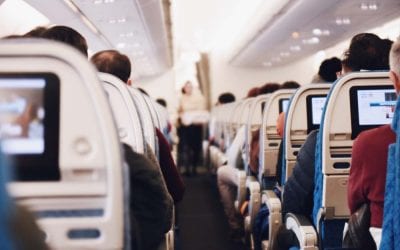This year will bring big changes for U.S. and foreign travelers. For American travelers, the Transportation Security Administration is taking over running Secure Flight, which will affect how airline passengers make reservations. Also, the new Western Hemisphere Travel Initiative (WHTI) rules will go into effect, generally requiring the use of passports for all U.S. citizens traveling abroad.
Many foreign visitors already have to contend with the expanded Visa Waiver Program and new ESTA (Electronic System for Travel Authorization) requirements. Additionally, the Department of Homeland Security (DHS) has proposed its US-Visit program to implement new exit procedures later this year which will include the collection of biometric data from foreign travelers as they leave the States.
I’m taking a wait-and-see approach to the new Secure Flight system. I plan to revisit WHTI regulations next month. I’ve been talking with travel agents, business travelers, and perennial cruisers, and I’m interested in their approach to the WHTI rules which go into effect in June.
I join the airlines, and the GAO (General Accounting Office; the audit, evaluation, and investigative arm of the United States Congress) which is questioning the plans for US-Visit’s new exit procedures.
I don’t dispute for a moment the concept of the US-Visit program which already collects foreign visitors’ biometric information when entering the country, to extend that to foreign visitors leaving the country. I question how they intend to carry out the program.
In May, 2007 DHS announced its intention to fully implement biometric exit procedures at all “ports of entry;” 116 airports, 15 seaports, and 154 land ports. DHS stated that their pilot program located at 14 airports demonstrated their technology works, but revealed travelers don’t voluntarily comply with the requirement. DHS stated that US-Visit exit procedures must be incorporated into the existing international visitor departure process to ensure compliance.
This past November, DHS announced their new proposal would require commercial airlines to collect the biometric exit data from foreign travelers exiting the U.S., not DHS. Robert Mocny, director of the US-Visit program, admitted the move would be “unpopular” with carriers, which might feel they are taking on the work of DHS. Mocny said,
Airlines don’t want to take on extra costs but we will expect them to collect this information for us. It’s a fact that 40% of illegal immigrants living in the U.S. arrived through the visa-waiver program, so we have to ensure people leave as expected.
Of course, that was an understatement. According to DHS’s own proposal, it will cost air and sea carriers up to $3.7B over 10 years. A GAO report says DHS has significantly underestimated the cost. IATA estimates the cost to air carriers alone would be $12.3B. Undoubtedly those costs would be passed on to passengers, so this proposal would essentially require U.S. travelers as a group to pay for a substantial cost of the nation’s border security due to foreign nationals’ travel in the U.S.
As a traveler, I see another problem in this proposal, far more troubling than its cost.
The GAO report points out that air carriers have estimated DHS’s proposal will add from one to two minutes processing time per passenger. That could collectively add an estimated three to five hours of processing per flight. Even with multiple personnel handling the processing, the GAO acknowledges that most travelers would be subjected to delays of about 50 minutes. This would affect everyone on each International flight, not just foreign nationals.
Personally, I think DHS has to rethink their proposal based on the clear findings of the GAO and testimony of the travel industry.
DHS should reconsider having U.S. citizen travelers pay the cost of border security at our air and sea ports of entry due to foreign nationals’ travel in the U.S. I think that security is the financial responsibility of all the country’s citizens.
DHS should reconsider how they carry out the program and its effect on the amount of time foreign visitors will need to be processed at the border before leaving the U.S. I believe that significant delays will cause foreign travelers to vacation elsewhere, which could seriously damage our economy. The delays will also prove to have a serious negative impact on international travel of U.S. citizens.
Newly confirmed DHS Secretary Janet Napolitano needs to direct her Department to be creative and make a new plan which will solve the serious shortcomings of the current proposal.
After many years working in corporate America as a chemical engineer, executive and eventually CFO of a multinational manufacturer, Ned founded a tech consulting company and later restarted NSL Photography, his photography business. Before entering the corporate world, Ned worked as a Public Health Engineer for the Philadelphia Department of Public Health. As a well known corporate, travel and wildlife photographer, Ned travels the world writing about travel and photography, as well as running photography workshops, seminars and photowalks. Visit Ned’s Photography Blog and Galleries.



